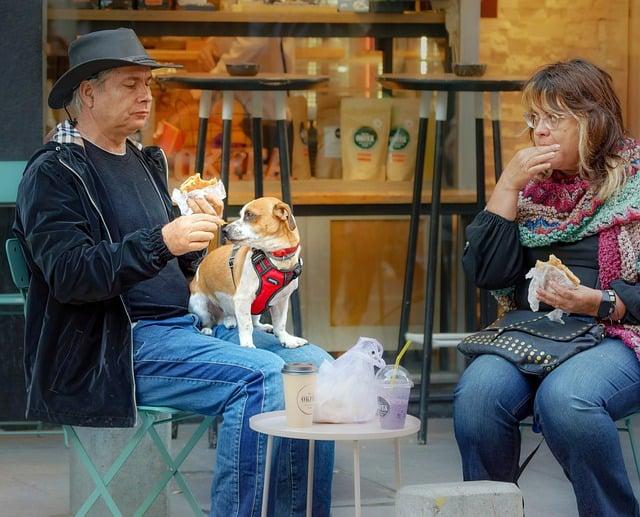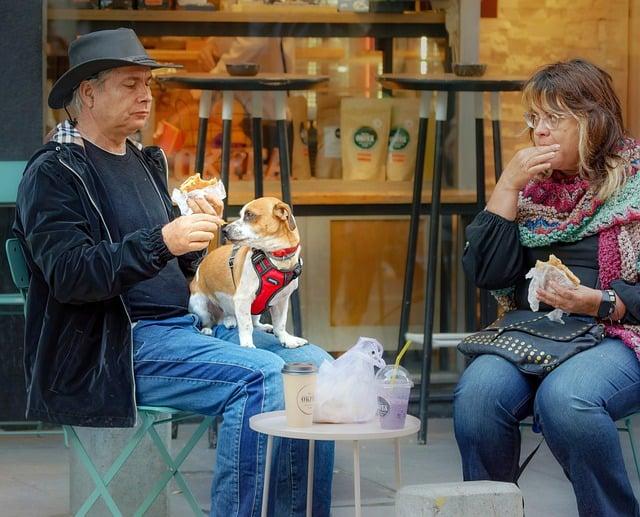In a quiet neighborhood, a family faced a growing concern about security. They had two dogs: Max, a loyal German Shepherd, and Bella, a playful Golden Retriever. One night, a stranger approached their home. Max stood firm, barking fiercely, while Bella wagged her tail, oblivious to the danger. The family quickly realized that while Bella was loving and friendly, Max’s protective instincts made him the better guardian. When it comes to guarding, a breed like the German Shepherd excels in loyalty and vigilance, ensuring peace of mind for any household. Choose wisely for your safety!
Contents
- Understanding the Key Traits of Effective Guard Dogs
- Evaluating Popular Breeds for Their Guarding Abilities
- Training Techniques to Enhance Your Dogs Protective Instincts
- Choosing the Right Environment for Optimal Guarding Performance
- Q&A
Understanding the Key Traits of Effective Guard Dogs
When selecting a dog for guarding purposes, it’s essential to recognize the traits that contribute to their effectiveness. **Temperament** plays a crucial role; a good guard dog should exhibit a natural protective instinct while remaining loyal and calm. Dogs that are overly aggressive or timid may not fulfill their guarding duties effectively. Look for breeds known for their balanced temperament, as they can discern between genuine threats and everyday situations.
Another vital characteristic is **intelligence**. An effective guard dog must be able to assess situations quickly and respond appropriately. Breeds that are highly trainable and eager to learn will adapt better to commands and routines. This adaptability not only enhances their guarding abilities but also fosters a strong bond with their handler, ensuring that the dog understands its role within the household or property.
**Physical attributes** also contribute significantly to a dog’s guarding capabilities. A strong, agile dog with a commanding presence can deter potential intruders simply by being there. Breeds that possess a robust build, combined with speed and endurance, are often more effective in protecting their territory. Additionally, a dog with a loud bark can serve as an excellent alarm system, alerting owners to any unusual activity.
Lastly, **socialization** is a key factor in developing an effective guard dog. A well-socialized dog can differentiate between friends and foes, which is essential for maintaining a safe environment. Early exposure to various people, animals, and situations helps the dog become more confident and less reactive. This balance of social skills and protective instincts ensures that the dog can act as a reliable guardian without becoming a liability in everyday interactions.
Evaluating Popular Breeds for Their Guarding Abilities
When considering a dog for guarding purposes, certain breeds stand out due to their innate protective instincts and trainability. Breeds such as the **German Shepherd**, **Rottweiler**, and **Doberman Pinscher** have long been favored for their loyalty and courage. These dogs not only possess physical strength but also exhibit a keen intelligence that allows them to assess situations and respond appropriately. Their natural guarding abilities make them excellent choices for families and businesses alike.
Another breed worth mentioning is the **Belgian Malinois**, known for its agility and high energy levels. This breed is often utilized in police and military work due to its ability to quickly learn commands and perform under pressure. The **Bullmastiff** is also a formidable guardian, combining a gentle demeanor with a powerful presence. Their sheer size can deter intruders, while their loyalty ensures they will protect their family fiercely.
It’s essential to consider the temperament and socialization of these breeds. While many are naturally protective, proper training is crucial to ensure they can distinguish between a threat and a friend. Regular exposure to various environments and people can help mitigate any aggressive tendencies. Breeds like the **Boxer** and **Akita** also require consistent training and socialization to harness their protective instincts effectively.
Ultimately, the best guarding dog will depend on your specific needs and lifestyle. Factors such as the dog’s size, energy level, and compatibility with children or other pets should be taken into account. By evaluating these popular breeds and their guarding capabilities, you can make an informed decision that aligns with your security requirements and family dynamics.
Training Techniques to Enhance Your Dogs Protective Instincts
To effectively enhance your dog’s protective instincts, it is essential to implement a variety of training techniques that cater to their natural abilities. One of the most effective methods is **positive reinforcement**, which encourages desired behaviors through rewards. This approach not only builds a strong bond between you and your dog but also instills confidence, making them more likely to respond protectively when needed. Incorporating treats, praise, and playtime as rewards can significantly boost your dog’s motivation to learn and perform protective behaviors.
Another valuable technique is **socialization**, which involves exposing your dog to different environments, people, and other animals. This exposure helps your dog distinguish between normal situations and potential threats. By regularly introducing your dog to various stimuli, you can teach them to remain calm and assess situations before reacting. A well-socialized dog is less likely to overreact to harmless situations, allowing them to focus on genuine threats and respond appropriately.
Incorporating **obedience training** into your dog’s routine is crucial for developing their protective instincts. Teaching commands such as “stay,” “come,” and “leave it” establishes a foundation of control and discipline. When your dog understands and obeys these commands, you can effectively manage their behavior in potentially dangerous situations. Consistent practice and reinforcement of these commands will ensure that your dog remains focused and responsive, making them a more reliable protector.
Lastly, consider engaging your dog in **protection sports** or specialized training programs designed to enhance their guarding abilities. Activities such as Schutzhund, protection dog training, or even agility courses can help channel your dog’s energy and instincts into productive behaviors. These programs not only improve your dog’s physical capabilities but also sharpen their mental acuity, making them more alert and aware of their surroundings. By investing time in these training techniques, you can cultivate a well-rounded protector that is both loyal and effective in safeguarding your home and family.
Choosing the Right Environment for Optimal Guarding Performance
When it comes to selecting the ideal environment for your guarding dog, several factors play a crucial role in enhancing their performance. A well-structured space not only supports the dog’s natural instincts but also ensures that they can effectively fulfill their guarding duties. Consider the following elements to create an optimal setting:
- Space and Layout: Ensure that the area is spacious enough for the dog to patrol and monitor. A layout that allows for clear sightlines will enable the dog to detect any potential threats swiftly.
- Secure Boundaries: Establishing secure perimeters is vital. Fencing and barriers should be robust enough to prevent intruders while allowing the dog to feel confident in their territory.
- Environmental Enrichment: Incorporate features that stimulate the dog’s senses. Elements like varied terrain, hiding spots, and interactive objects can keep the dog engaged and alert.
- Controlled Access: Limit access to the guarding area to ensure that the dog can focus on their responsibilities without distractions. This control helps reinforce their role as a protector.
Temperature and weather conditions also significantly impact a dog’s performance. Extreme heat or cold can affect a dog’s energy levels and focus, which is why it’s essential to provide a comfortable environment. Consider the following:
- Climate Control: Ensure that the guarding area has adequate shelter from harsh weather. This could include shaded areas for hot days or insulated spaces for colder climates.
- Hydration and Nutrition: Access to fresh water and proper nutrition is crucial for maintaining the dog’s stamina and alertness during their guarding duties.
- Rest Areas: Designate quiet zones where the dog can retreat to recharge. A well-rested dog is more effective and vigilant.
Moreover, the presence of other animals or distractions can influence a dog’s guarding capabilities. It’s essential to create an environment that minimizes these distractions to maintain focus. Consider the following strategies:
- Isolation from Other Pets: If possible, keep the guarding dog separate from other pets that may divert their attention or create unnecessary stress.
- Controlled Socialization: While socialization is important, ensure that interactions with other animals are supervised and limited to prevent distractions during guarding duties.
- Consistent Training Environment: Regular training sessions in the same environment can help the dog associate the area with their guarding responsibilities, reinforcing their role.
the psychological aspect of the environment cannot be overlooked. A dog’s mental state directly affects their performance. To foster a positive mindset, consider the following:
- Positive Reinforcement: Use rewards and praise to encourage desired behaviors, helping the dog feel confident in their guarding role.
- Routine Establishment: Dogs thrive on routine. Establishing a consistent schedule for training, feeding, and resting can help the dog feel secure and focused.
- Minimize Stressors: Identify and eliminate potential stressors in the environment, such as loud noises or chaotic surroundings, to help the dog maintain a calm and alert demeanor.
Q&A
-
What breeds are considered the best for guarding?
Some of the top breeds known for their guarding abilities include:
- German Shepherds – Highly intelligent and versatile, they excel in protection work.
- Rottweilers – Strong and confident, they are natural protectors of their families.
- Doberman Pinschers – Alert and loyal, they are known for their speed and agility.
- Belgian Malinois – Often used in police and military roles, they are highly trainable and protective.
-
How important is training for a guarding dog?
Training is crucial for any guarding dog. Proper training ensures that the dog can differentiate between a threat and a non-threat, respond appropriately, and follow commands. A well-trained dog is not only more effective in guarding but also safer around family and friends.
-
Are guarding dogs suitable for families?
Yes, many guarding breeds can be excellent family pets when properly socialized and trained. They often form strong bonds with their families and can be both protective and affectionate. However, it’s essential to choose a breed that matches your family’s lifestyle and to provide consistent training and socialization.
-
What are the key traits to look for in a guarding dog?
When selecting a guarding dog, consider the following traits:
- Temperament – Look for a dog that is confident, alert, and protective.
- Trainability – Choose a breed that is eager to learn and responsive to commands.
- Socialization – A good guarding dog should be well-socialized to distinguish between friends and potential threats.
- Physical Attributes – Strong, agile dogs tend to be more effective in guarding roles.
choosing the right dog for guarding is crucial for your peace of mind and security. By considering factors like temperament, training, and breed characteristics, you can select a loyal protector that fits your lifestyle. Invest wisely for safety.

大家好,我是彼得潘,專業的手法身體治療師。我喜歡探索和研究各種主題,並透過與人工智慧的合作分享專業、實用、有趣的文章。我們定期進行人工審核,以確保內容的準確性。如果您發現文章中有任何不準確的地方,請隨時與我們聯繫,我們會及時糾正。您可以透過 [email protected] 與我們聯繫。



